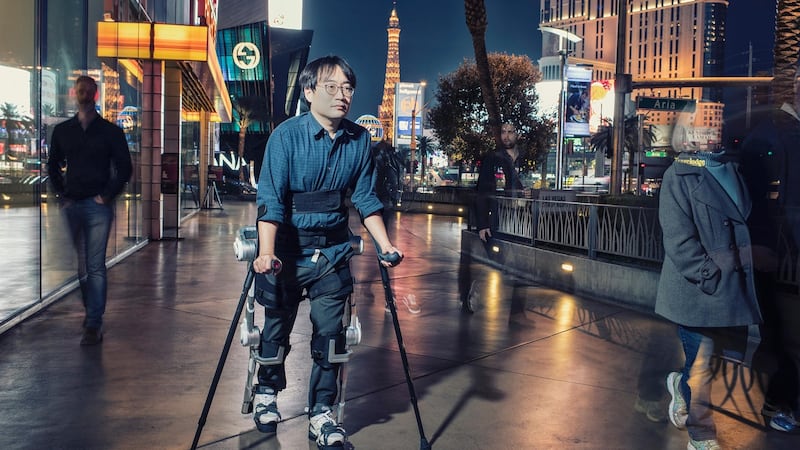Hyundai still reckons that the future is fuel cells, and while it may have the Ioniq all-electric and plugin hybrid model on sale now, the Korean car maker thinks that eventually we'll all be refuelling with hydrogen, not electrons.
At Geneva, it’s underscoring this belief with the FE fuel cell concept, a futuristic SUV which claims to improve upon the range, weight and power density of the existing experimental Tucson fuel cell car.
The FE’s fuel cell is said to be 20 per cent lighter than that of the Tucson, ten per cent more efficient, and with 30 per cent higher power density. Hyundai claims that the concept could, if put into production, go for 800km on one tank of hydrogen.

Woong Chul Yang, Vice Chairman of Hyundai Motor Company, said: "Hyundai Motor has a heritage of building innovative, fuel-efficient vehicles that advance the automotive industry's environmental progress. Our FE Fuel Cell Concept is an important evolution of our pioneering hydrogen leadership, and moves us closer to our vision for a 'Hydrogen Society', where transportation is clean, efficient and enhances the lives of our customers."
Yang reiterated Hyundai’s commitment to developing fuel cell technology, even at a time when battery-electric cars are garnering more publicity. Hyundai plans to launch 14, possibly more, environmentally-focused models between now and 2020.
The FE’s styling is said to be inspired by water (the only emission from a hydrogen fuel cell), and it uses the water vapour created by the chemical reaction in its fuel cells to humidify the air conditioning system, making the interior of the car more comfortable, says Hyundai.
The FE can also charge up a small battery pack as it drives, which can then be popped out to use in other forms of transport, such as an electric bike or scooter.
Back to reality
Rather more down to Earth is the new i30 estate. The i30 hatch is already on sale, but those with an IKEA fetish might want to wait for the arrival of this sensible load-lugger. Competing with the vast Skoda Octavia Combi for loadspace, the i30 Tourer boasts 602-litres of boot volume with the seats up, or a vast 1,650-litres with the back seats folded.
The engine range mirrors that of the i30 hatch, so you can choose from 1.0-litre or 1.4-litre petrol turbos, or a 1.6 diesel. There’s also a hefty list of standard safety equipment, including a camera-based autonomous emergency braking system.
And back to the future
Heading back to the sci-fi stars, Hyundai is also using the Geneva show to demonstrate some of the personal robotic tech that it showed off at the Las Vegas Consumer Electronics Show earlier this year, including the he H-MEX exoskeleton. H-MEX stands for Hyundai Medical Exoskeleton and it has been designed not to bestow superhero powers but to allow those with severe spinal injuries to walk again. By utilising a wireless clutch with on-board motion control system, the equipment gives paraplegics the ability to sit, stand, move, turn and even walk up or down stairs.
The H-MEX can carefully match itself to the gait and stride of a wearer, and supports the lower back and upper legs. There's a second exoskeleton called HUMA, or Hyundai Universal Medial Assist which is designed to provide extra lifting power for those with limited muscle strength. By adjusting assistive torque according to each form of movement, such as walking, running, or going up and down stairs, HUMA assists users to move effortlessly. It can support up to 40kg of a wearer's weight and, unloaded, can run at a speed up to 12km/h.
Meanwhile, the smaller Hyundai Waist EXoskeleton, known as H-WEX, provides upper-body and hip support to prevent back injuries for workers doing repetitive manual work or lifting heavy objects, potentially hugely useful to medical teams dealing with infirm or immobilised patients, as well as simpler tasks such as just lifting heavy objects.
It’s part of a new focus on so-called ‘wellness’ from Hyundai, which is also using the CES to show off a concept car cabin called the Health + Mobility Cockpit. In the Cockpit, a series of sensors throughout the car monitor the physical and mental state of the driver, detecting everything from the driver’s posture to their respiratory rate and breathing depth as well as measure heart-rate variability for stress response, and use eye tracking and facial feature recognition to track alertness and emotional state.
If the Healthcare Cockpit’s sensors detect that the driver is losing concentration at the wheel, an ‘Alert Burst’ can be triggered to engage them. Or if sensor data shows the driver is in traffic or the driver has elevated stress levels, a ‘Calm Burst’ can be activated to boost relaxation. It does this by altering the seating position, injecting a specific scent into the air conditioning, altering the ambient light or temperature or playing energising or relaxing music.









